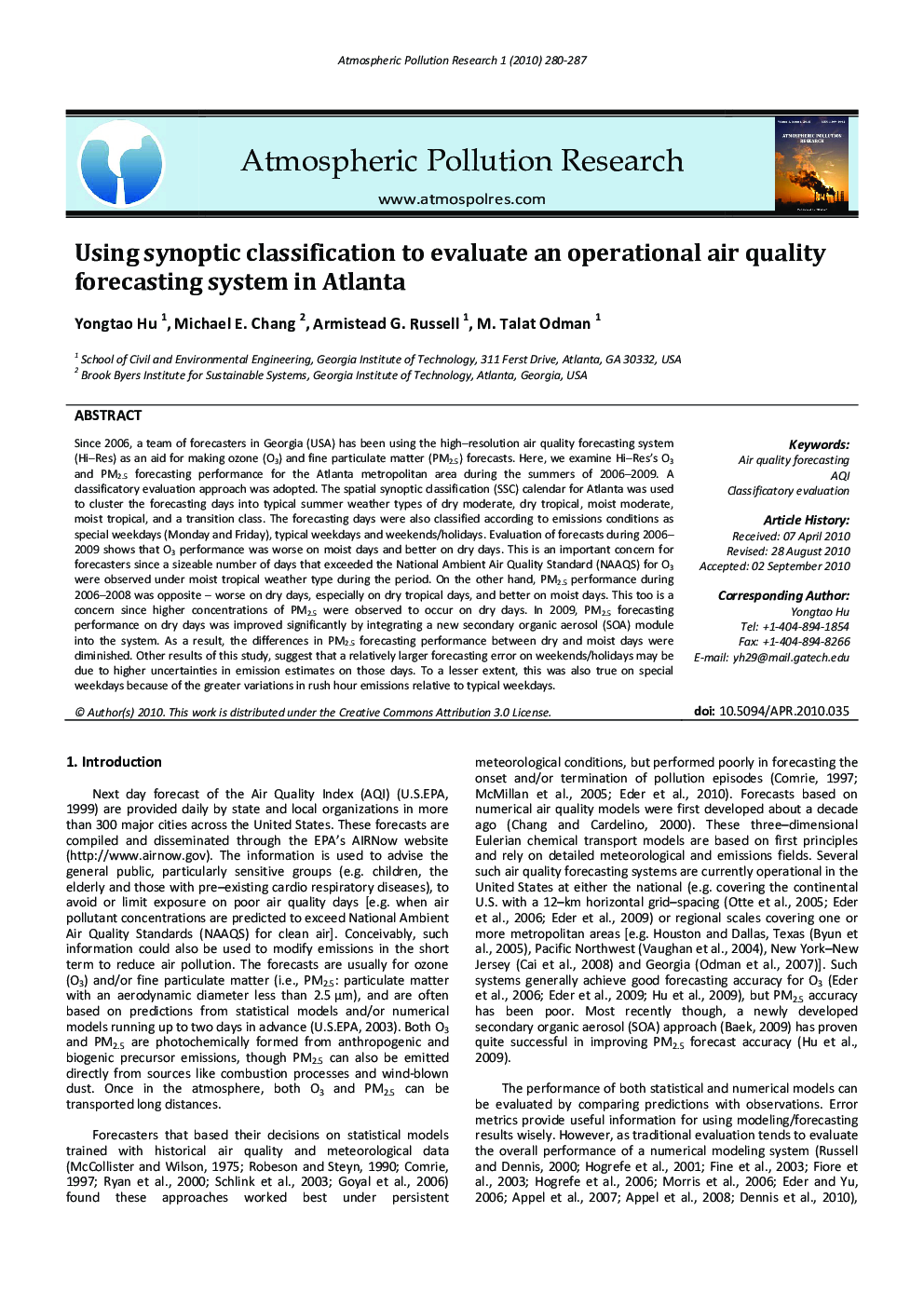| کد مقاله | کد نشریه | سال انتشار | مقاله انگلیسی | نسخه تمام متن |
|---|---|---|---|---|
| 4435040 | 1310541 | 2010 | 8 صفحه PDF | دانلود رایگان |

Since 2006, a team of forecasters in Georgia (USA) has been using the high–resolution air quality forecasting system (Hi–Res) as an aid for making ozone (O3) and fine particulate matter (PM2.5) forecasts. Here, we examine Hi–Res’s O3 and PM2.5 forecasting performance for the Atlanta metropolitan area during the summers of 2006–2009. A classificatory evaluation approach was adopted. The spatial synoptic classification (SSC) calendar for Atlanta was used to cluster the forecasting days into typical summer weather types of dry moderate, dry tropical, moist moderate, moist tropical, and a transition class. The forecasting days were also classified according to emissions conditions as special weekdays (Monday and Friday), typical weekdays and weekends/holidays. Evaluation of forecasts during 2006– 2009 shows that O3 performance was worse on moist days and better on dry days. This is an important concern for forecasters since a sizeable number of days that exceeded the National Ambient Air Quality Standard (NAAQS) for O3 were observed under moist tropical weather type during the period. On the other hand, PM2.5 performance during 2006–2008 was opposite – worse on dry days, especially on dry tropical days, and better on moist days. This too is a concern since higher concentrations of PM2.5 were observed to occur on dry days. In 2009, PM2.5 forecasting performance on dry days was improved significantly by integrating a new secondary organic aerosol (SOA) module into the system. As a result, the differences in PM2.5 forecasting performance between dry and moist days were diminished. Other results of this study, suggest that a relatively larger forecasting error on weekends/holidays may be due to higher uncertainties in emission estimates on those days. To a lesser extent, this was also true on special weekdays because of the greater variations in rush hour emissions relative to typical weekdays.
Journal: Atmospheric Pollution Research - Volume 1, Issue 4, October 2010, Pages 280–287